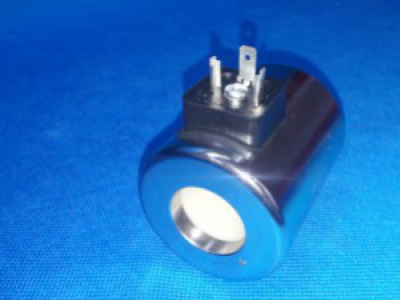The solenoid coil, differently introductor, is a part of an electrical circuit, it is a passive electronic element.
The solenoid coil has a winding formed of amount scroll turns wound e.g. on the surface of the cylinder (cylindrical coil), on the surface of the ring (toroidal coil) or on the plane (spiral or flat coil). Inside or outside the turns may be a magnetic core usually made of ferromagnetic material. A coil without a magnetic core (air coil) is a solenoid.
 |
 |
The coil is an inertial element - it accumulates energy in the generated magnetic field. Combined with a capacitor, it creates a resonant circuit (one of the fundamental electronic circuits).
Coils which are powered by direct current are called electromagnets. They are used to generate or compensate for the magnetic field, examples are: demagnetization and magnetic field measurements.
The coil is the basic element of the relay and its task is to convert electricity into mechanical energy. The basic parameters that should be considered when choosing the right coil are: rated voltage, resistance and power consumption.
 |
When using a relay, you need to know that the coil is a source of significant overvoltages that can cause interference with other devices. The relay coils in the operating state have a high inductance, which means that after switching off the relay winding there is a sudden increase in voltage. Such a disorder negatively affects the operation of nearby electronic systems.
The electromagnetic field generated by the solenoid coil, when the appropriate voltage is applied to it, causes the movable piston to move, which allows the solenoid valve to work.
The solenoid coil is the control element of the solenoid valve (electrovalve). The solenoid valve is a valve that is used to cut off or control the flow of liquid or gaseous media. As the electric current flows, a magnetic field is created that attracts the core or the moving anchor. When the spring force is overcome, the core or anchor is pulled all the way to the stop.
There is also a tension-free state in the solenoid valve. The tension-free state is so-called normal state. This means that the solenoid valve is open or closed when no electrical voltage is applied to the coil. After applying the voltage required by the coil, the valve changes its state.
Coil electrical supply:
CEME solenoid valves are standard with a 230V AC (50 Hz) coil, but are also available with:
110 VC or DC
48 VC or DC
24 VC or DC
12 VC or DC

